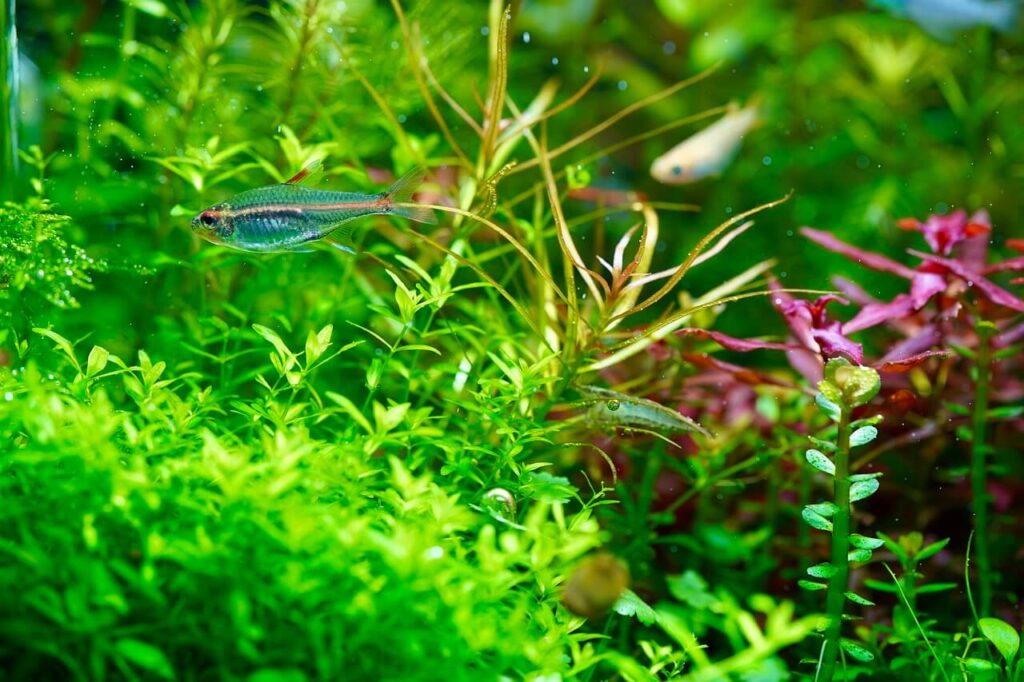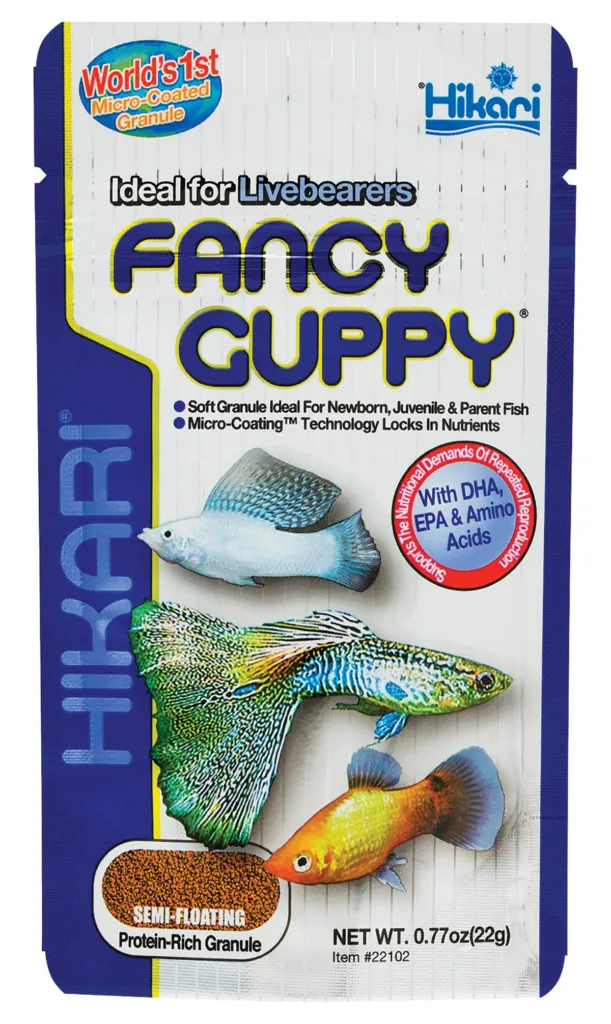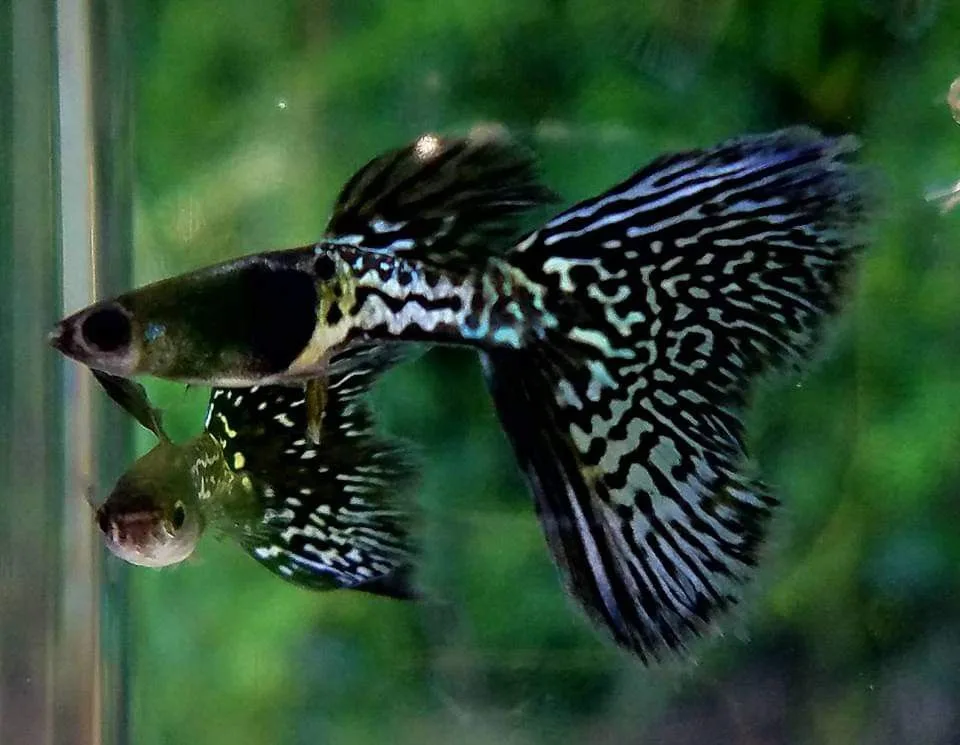A rainbow guppy is a type of guppy fish that is known for its vibrant colors. Male rainbow guppies are the most colorful, with a wide variety of patterns and hues that can include red, orange, yellow, green, blue, indigo, and violet. Female rainbow guppies are typically less colorful, but they can still be quite attractive.
Rainbow guppies are popular freshwater aquarium fish because they are relatively easy to care for and they can be very hardy. They are also livebearers, which means that they give birth to live young instead of laying eggs. This makes them a good choice for beginner aquarists.
Origin
Rainbow guppies are originated from South America, specifically the northern part of Brazil, Venezuela, and the islands of Barbados and Trinidad. They were first discovered by Robert John Lechmere Guppy in 1866, and were named after him.
Rainbow guppies are now found all over the world, as they have been introduced to many different environments, both accidentally and intentionally. They are popular aquarium fish because of their vibrant colors and relatively easy care requirements.
The rainbow guppies that we see today are the result of selective breeding. Guppy breeders have been working for many years to create guppies with more and more vibrant colors and patterns. As a result, there are now many different varieties of rainbow guppies available, each with its own unique look. Source: thesprucepets.com
Appearance

Male and female rainbow guppies have some distinct physical differences.
Appearance
Male rainbow guppies are typically more colorful than female rainbow guppies. They have a wide variety of patterns and hues that can include red, orange, yellow, green, blue, indigo, and violet. Their fins are also typically larger and more elaborate than those of female rainbow guppies.
Female rainbow guppies are typically less colorful than male rainbow guppies. They often have a silver or gold body with some black markings. Their fins are also typically smaller and less elaborate than those of male rainbow guppies.
Size
Male rainbow guppies are typically smaller than female rainbow guppies. Male rainbow guppies typically measure about 1.5 inches in length, while female rainbow guppies typically measure about 2 inches in length.
Tank Setup
To set up a tank for rainbow guppies, you will need the following equipment:
Tank: A 10-gallon tank is the minimum size for a small group of rainbow guppies. However, a 20-gallon tank or larger is ideal, as it will give your fish more room to swim and explore.

Filter: A good filter is essential for keeping your water clean and healthy for your fish. A hang-on-back filter or a canister filter is a good option for a rainbow guppy tank.

Heater: Rainbow guppies prefer warm water, so you will need a heater to keep the temperature in your tank between 72 and 82 degrees Fahrenheit

Substrate: Gravel or sand is a good substrate for a rainbow guppy tank.

Plants: Live plants are a great way to add oxygen and hiding places to your tank. Rainbow guppies prefer densely planted tanks, so be sure to add plenty of plants when setting up your tank.

Decorations: You can add decorations to your tank to make it more visually appealing. However, be sure to choose decorations that are safe for fish and that will not damage their fins.

Once you have gathered all of your equipment, you can begin setting up your tank:
- Rinse the substrate with cold water to remove any dust or debris.
- Add the substrate to the bottom of the tank.
- Add the plants to the tank.
- Fill the tank with water.
- Add the filter and heater to the tank and plug them in.
- Set the heater to the desired temperature.
- Allow the tank to cycle for at least two weeks before adding fish.
Once the tank has cycled, you can add your rainbow guppies. Be sure to add them slowly and gradually to give them time to adjust to their new home.
Breeding
Breeding rainbow guppies is a relatively easy process. Rainbow guppies are livebearers, which means that they give birth to live young instead of laying eggs.
To breed rainbow guppies, you will need a breeding pair. A breeding pair consists of one male and one female rainbow guppy. The male should be colorful and have a long tail. The female should be plump and have a large gravid spot, which is a dark spot on her belly that indicates that she is pregnant.
Once you have a breeding pair, you will need to set up a breeding tank. The breeding tank should be at least 10 gallons in size and should be well-planted. The plants will provide hiding places for the fry, which are the baby rainbow guppies.
Once the breeding tank is set up, you can add the breeding pair. The male will court the female by swimming around her and displaying his fins. Once the female is ready to mate, the male will fertilize her eggs internally.
The female will give birth to live young within 21-30 days of being fertilized. The number of fry that she produces will vary depending on her size and age.
Once the fry are born, they will be very small and vulnerable. It is important to feed them a small food that they can easily eat, such as infusoria or baby brine shrimp. The fry will grow quickly and will be ready to be moved to a community tank within a few weeks.
Here are some additional tips for breeding rainbow guppies:
- Select healthy breeding pairs. The male and female should be healthy and free of disease.
- Provide the breeding pair with a good diet. Feed them a variety of high-quality foods to ensure that they are getting all of the nutrients they need.
- Maintain good water quality in the breeding tank. Perform regular water changes and test the water regularly to ensure that the parameters are within the optimal range for rainbow guppies.
- Feed the fry a small food that they can easily eat. Infusoria and baby brine shrimp are good options.
- Be patient. It can take several weeks for the fry to grow large enough to be moved to a community tank.
With proper care, breeding rainbow guppies can be a rewarding experience.
Feeding

Rainbow guppies are omnivores, so you can feed them a variety of foods, including flake food, live food, and frozen food. It is important to provide them with a variety of foods to ensure that they are getting all of the nutrients they need.
Here are some good food options for rainbow guppies:
- Flake food: Flake food is a good staple food for rainbow guppies. Choose a high-quality flake food that is specifically designed for tropical fish.
- Live food: Live food is a good source of protein for rainbow guppies. Some good live food options include brine shrimp, daphnia, bloodworms, and mosquito larvae.
- Frozen food: Frozen food is a convenient way to provide your guppies with a variety of nutrients. Some good frozen food options include bloodworms, brine shrimp, and daphnia.
You can feed your rainbow guppies twice a day, once in the morning and once in the evening. Be sure to feed them only as much food as they can eat in a few minutes. Overfeeding can lead to water quality problems and health issues for your fish.
Here are some additional tips for feeding rainbow guppies:
- Feed your guppies a variety of foods to ensure that they are getting all of the nutrients they need.
- Feed your guppies only as much food as they can eat in a few minutes.
- Avoid overfeeding, as this can lead to water quality problems and health issues for your fish.
- Remove any uneaten food from the tank after a few minutes to prevent water quality problems.
With proper care, rainbow guppies can thrive on a variety of different foods.
Tank Mates
Rainbow guppies are peaceful fish, so they can be kept with a variety of other peaceful fish. Some good tankmates for rainbow guppies include:
- Other guppies
- Platies
- Mollies
- Cory catfish
- Otocinclus catfish
- Tetras
- Zebra danios
- White cloud mountain minnows
- Harlequin rasboras
- Cherry barbs
- Rummy-nose tetras
- Neon tetras
- Cardinal tetras
It is important to avoid keeping rainbow guppies with aggressive fish or fish that are much larger than them. Some fish that you should avoid keeping with rainbow guppies include:
- Cichlids
- Bettas
- Goldfish
- Barbs
- Sharks
- Angelfish
If you are unsure whether or not a particular fish is a good tankmate for rainbow guppies, it is always best to err on the side of caution and avoid keeping them together.
Rainbow guppies are a beautiful and rewarding aquarium fish. They are relatively easy to care for and they can be quite hardy. They are also livebearers, which means that they give birth to live young instead of laying eggs. This makes them a good choice for both beginner and experienced aquarists.











